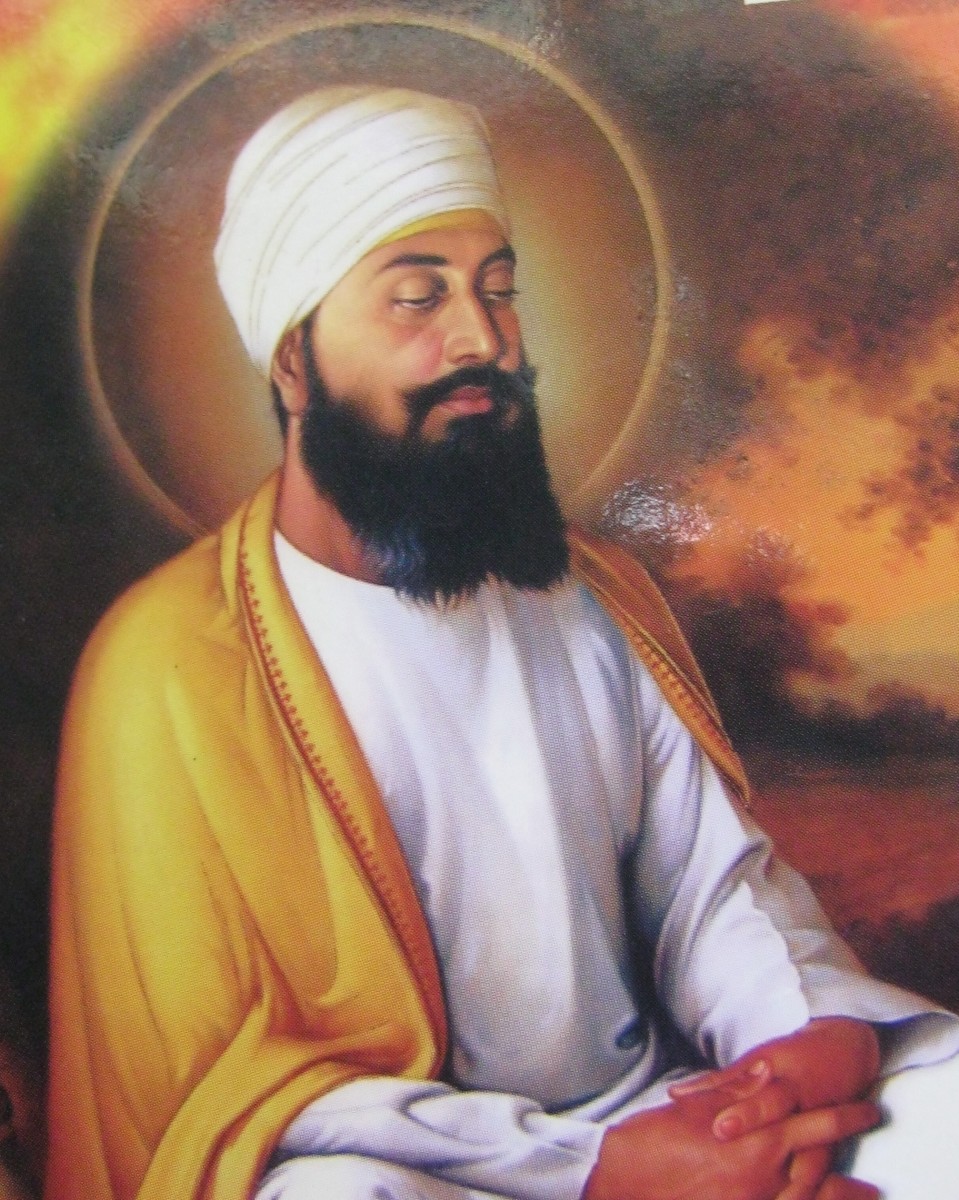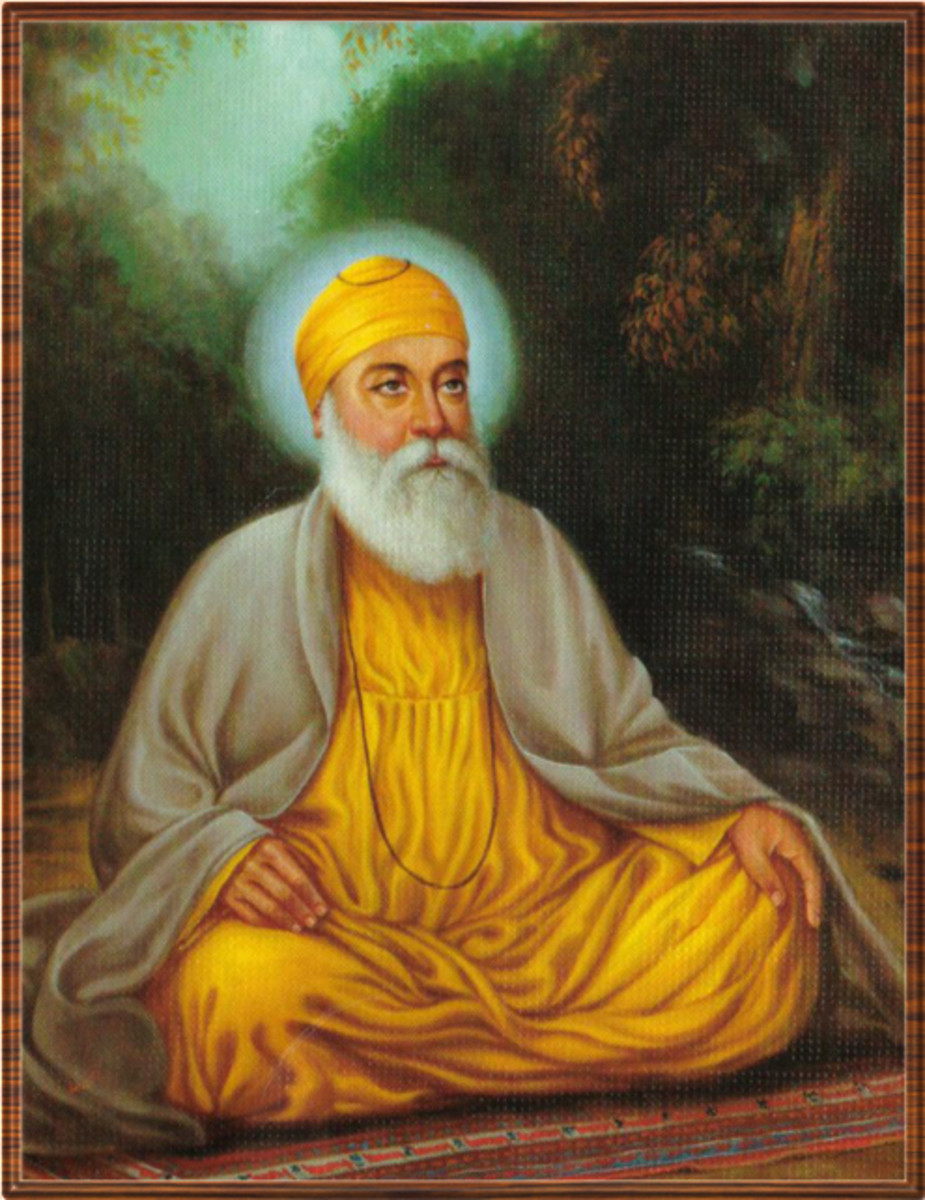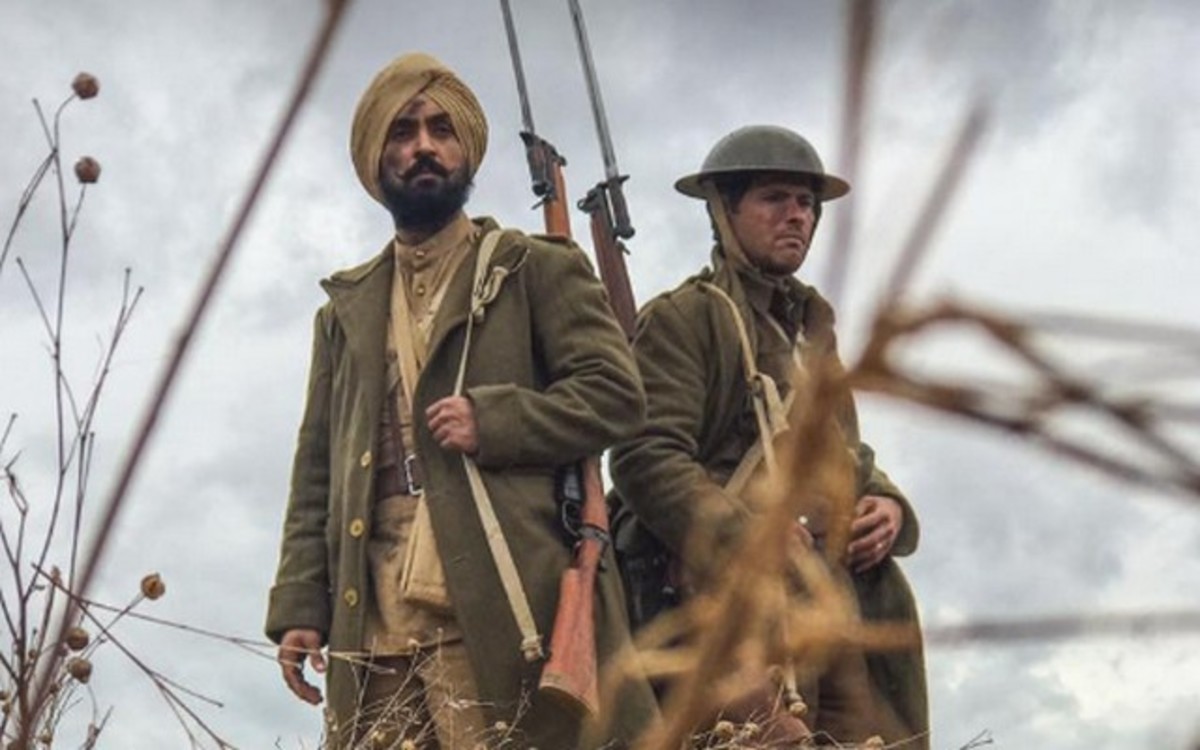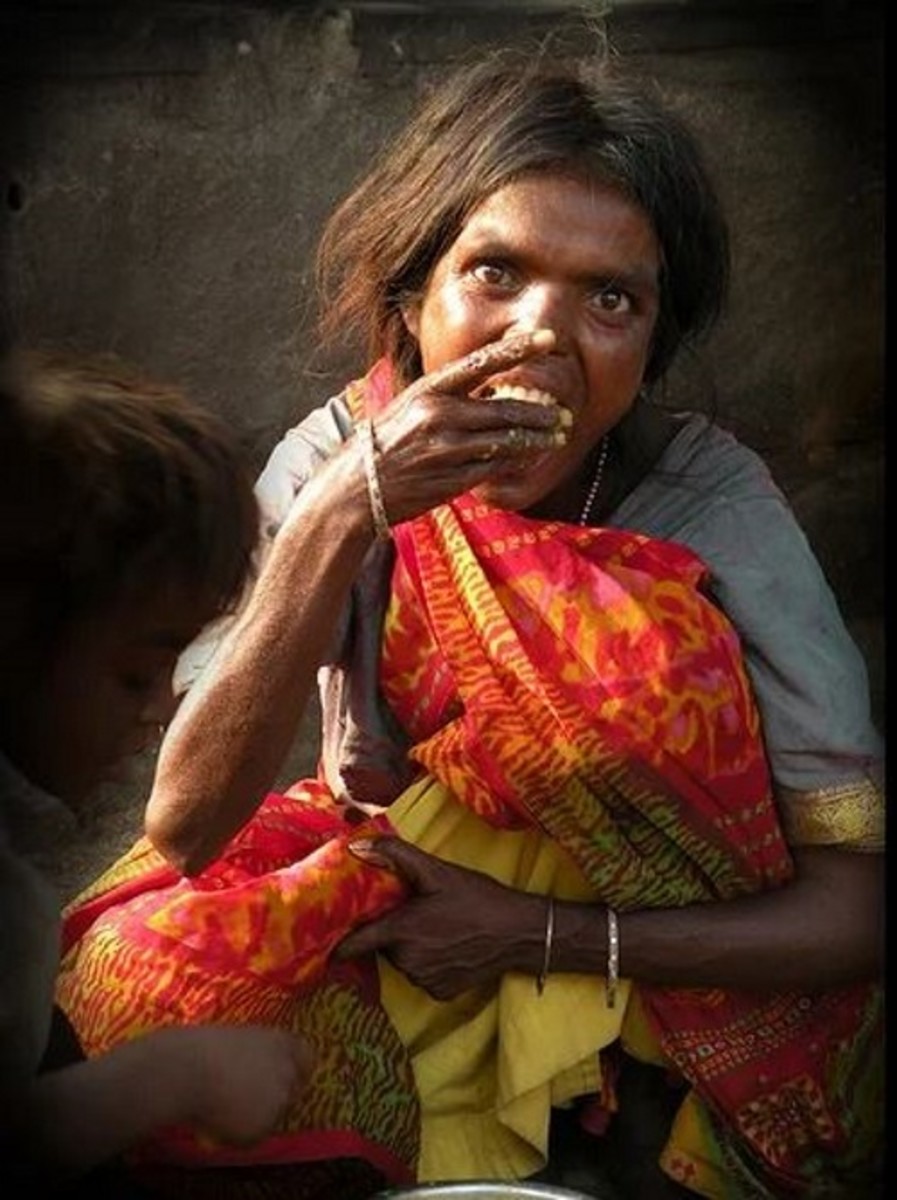Guru Gobind Singh and His Message' If All Else Fails Its Righteous to Draw the Sword'
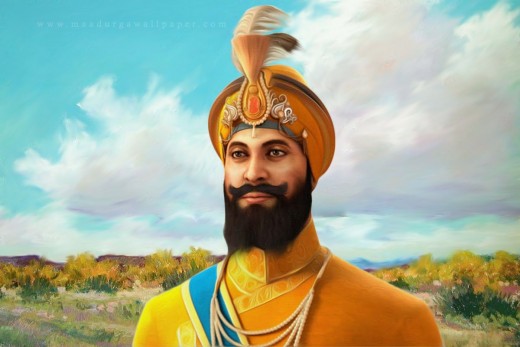
Introduction
Guru Gobind Singh was the 10th Sikh Guru. He was a poet, philosopher, and warrior who left an indelible mark on the Sikh psyche. Guru Gobind Singh was the last guru as after him as per his injunction guruship was abolished and as instructed by him the holy book the Adi Granth was recognized as the guru.
The guru took over the temporal reins of the Sikhs at a critical time in Indian history. this was the period when the bigoted Aurangzeb the 6th Mughal emperor ruled. Aurangzeb had come to power after a bloody war in which his 3 brothers were killed after they were defeated. Aurangzeb executed his captured brothers. His killing of his brother Dara Shikoh was particularly abhorrent. Dara's eyes were gouged out, his tongue cut before he was beheaded. Aurangzeb also started a campaign to destroy Hindu temples and convert the Hindus to Islam. His campaign in Punjab was particularly gruesome as Hindus were killed for not converting and Hindu women were carted en masse to populate the harems.
At that time the Hindus and the Sikhs were greatly harassed. In 1699 the guru thought of s method to vitalize the oppressed Hindus. He decided to have a ceremony on the day of Baisakhi, the Punjabi new year and form a militant face to fight the Mughals. Vaisakhi, also known as Baisakhi, marks the first day of the month of Vaisakh and is traditionally celebrated annually on 13 April and sometimes 14 April.
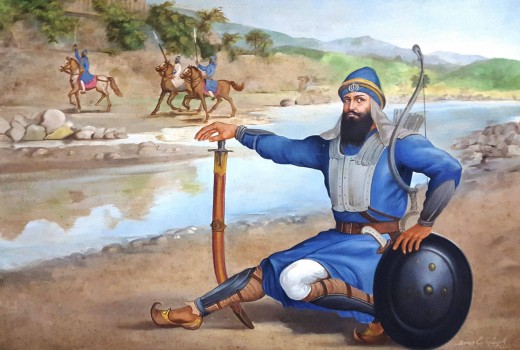
Rise of the Guru
At this critical juncture, Hindus approached Guru Gobind for a way out. In 1699 the Guru replied with a stern message. He would create a sword arm of the Hindus. he also penned his famous couplet " If all else fails, it is but righteous to draw the sword.".
In 1699 the Guru called a vast congregation at Anandpur Sahib in Punjab. Hindus and Sikhs from all over Punjab flocked to the venue. There was a sense of urgency as the reign of terror of the Mughals had gone overboard. Historians now estimate that the Hindu population decreased by 10-80 million during the days of Muslim rule.
The Guru donned the robes of a warrior and drew his sword before the congregation which waited with baited breath as to what the guru was going to do. The Guru asked for 5 volunteers who were ready to sacrifice their lives for the cause of the Sikhs and Hindus. Five men volunteered and one by one they were taken behind a curtain and each time the Guru returned with his sword dripping with blood. To the assembled people it appeared Guru Gobind Singh had executed the men. The guru returned after the last man and it transpired that the Guru had only cut the heads of goats. The purpose of this ceremony was to steel the men and women in the congregation and give them a new resolve. The Guru now created the "Khalsa' or the pure who would fight Aurangzeb and his soldiers.
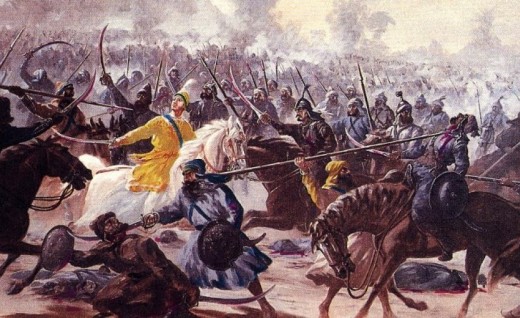
Aurangzeb vs the Guru and Zafarnama
This is a poignant moment in Indian history as the Guru galvanized a defeated race and infused them with resolve and fortitude. He began his campaign against the Mughals with the war cry ' Sat Sri Akal'. History records that by the middle of the 18th century the foundation of the Sikh empire was laid as the Mughals were defeated and vanished from the scene.
Just after the creation of the Khalsa, Aurangzeb let loose a reign of terror. At one stage 40 Sikhs were besieged and fought the famous battle of Chamkor 6 Dec 1704. This was despite the Mughal commander having agreed to give safe conduct to 40 famished Sikhs, yet were attacked. It was a bitter fight resulting in the death of two sons of Gobind Singh but the Sikhs held their own. In 1705 guru Gobind Singh penned the famous Zafarnama the Sikhs of a safe passage,
The letter appears to have had a somber effect on Aurangzeb and he realized his mistake. This letter forms a part of the Dasam Granth . After that, he invited the guru to come and meet me but the guru replied that Aurangzeb must come and meet him. Probably the emperor may have gone to meet him. But in 1707 he died later his son Bahadur Shah made peace with Guru Gobind
Last word
The guru in Dasam Granth states that in his previous birth he was a Bairagi in the Himalayas and took rebirth to save the Hindus from the atrocities of Aurangzeb This may or may not be true but the fact remains that Govind Singh molded the Sikhs into a potent military force that ultimately prevailed and led to the formation of the Sikh empire.
© 2013 MG Singh

